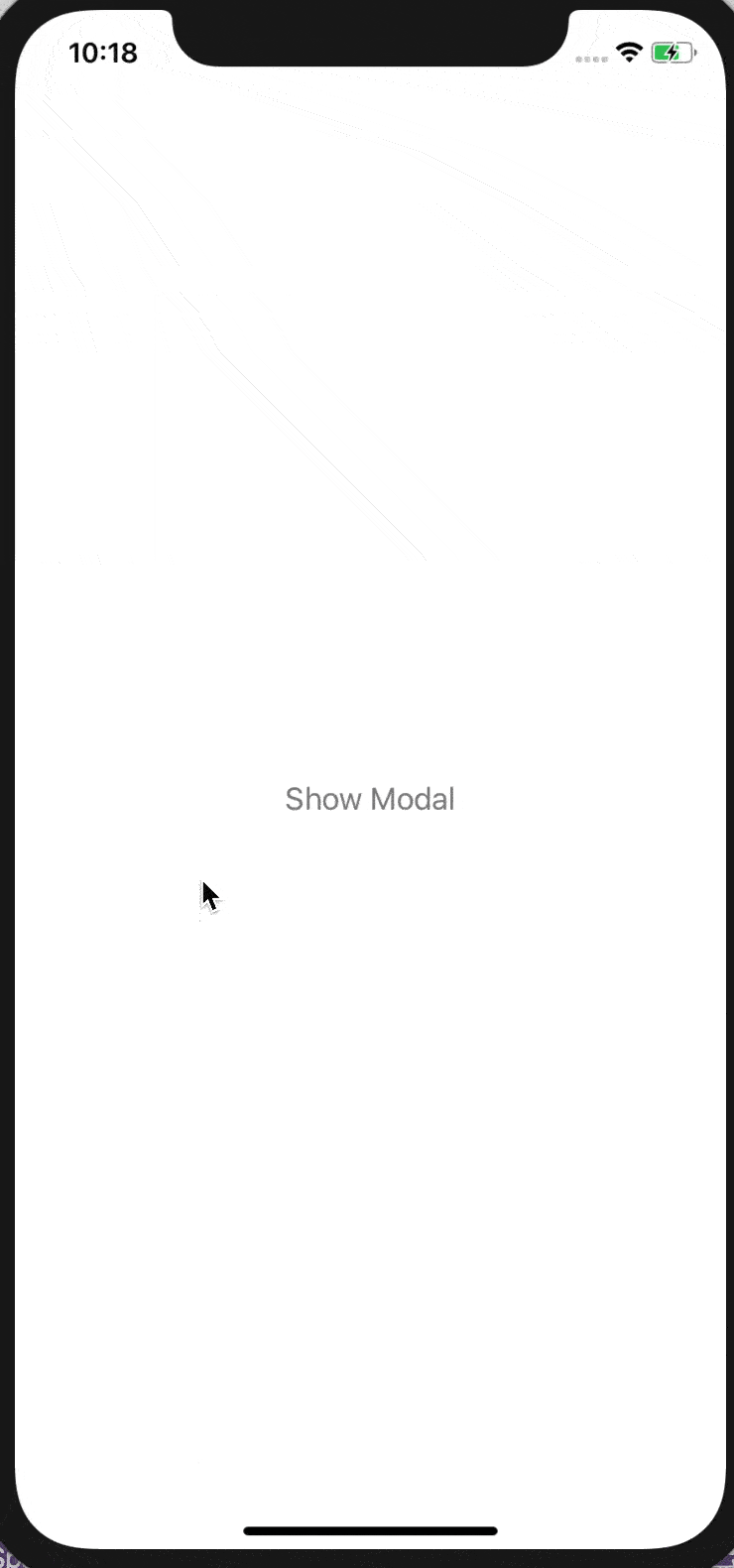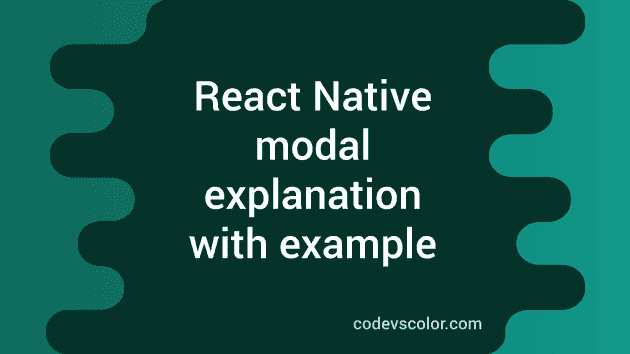Introduction :
In this react native tutorial, I will show you how to create one modal. A modal is used to present one content above a view. We can use modal to show one view like a popup.
Props of Modal component :
Following are the components available for this Modal :
[Optional] animationType :
It is used to set the animation type i.e. the animation Modal will use when to appear. It can be slide from the bottom, fade-in, or no animation. Anyone of ‘none’, ‘slide’, and ‘fade’ can be used.
[Optional][Android] hardwareAccelerated :
Boolean value to control force hardware acceleration.
[Optional][Android] statusBarTranslucent :
Boolean value to control if the modal should go under the statusbar or not.
[Optional][iOS] onDismiss :
It is a function that is called when the Modal is dismissed.
[Optional][iOS] onOrientationChange :
This is a function called when the orientation changes. It is also called when the modal first renders.
[Android, TVOS - required, others - not required] onRequestClose :
Function that is called when the hard back button of Android is pressed or a menu button on Apple TV is pressed.
[Optional] onShow :
Function that is called when the modal is shown.
[Optional][iOS] presentationStyle :
Controls how the modal appears. It can take any of the :
‘fullScreen’ : Covers the whole screen ‘pageSheet’ : Only on larger devices, covers portrait-width view centered ‘formSheet’ : Only on larger devices, covers narrow-width view centered ‘overFullScreen’ : Covers the full screen with transparency
[Optional] statusBarTranslucent :
Boolean value to define if the modal should show under status bar.
[Optional][iOS] supportedOrientations :
Supported orientation the modal supports. It can be any of the ‘portrait’, ‘portrait-upside-down’, ‘landscape’, ‘landscape-left’, ‘landscape-right’. For iOS, it depends on what is defined as UISupportedInterfaceOrientations in info.plist file.
[Optional][iOS] transparent :
Boolean value to define wheather the modal will draw over a transparent view or not.
[Optional] visible :
Change the visibility of the modal.
Example program :
The below program demonstrates how to use a Modal :
import React, {useState} from 'react';
import {Modal, StyleSheet, Text, View, Button} from 'react-native';
const App = () => {
const [visible, setVisible] = useState(false);
return (
<View style={styles.parentView}>
<Modal animationType="slide" transparent={false} visible={visible}>
<View style={styles.centeredView}>
<View style={styles.modalBody}>
<Text style={styles.modalText}>Warning !</Text>
<Button
title="Ok"
marginBottom="0"
color="gray"
onPress={() => setVisible(false)}
/>
</View>
</View>
</Modal>
<Button
title="Show Modal"
color="gray"
onPress={() => setVisible(true)}
/>
</View>
);
};
const styles = StyleSheet.create({
parentView: {
flex: 1,
justifyContent: 'center',
alignItems: 'center',
marginTop: 22,
},
centeredView: {
flex: 1,
justifyContent: 'center',
margin: 22,
},
modalBody: {
margin: 10,
backgroundColor: 'white',
borderRadius: 10,
padding: 40,
shadowColor: '#000',
shadowOffset: {
width: 0,
height: 1,
},
shadowOpacity: 0.25,
shadowRadius: 4,
elevation: 6,
alignItems: 'center',
},
modalText: {
marginBottom: 15,
textAlign: 'center',
color: 'red',
},
});
export default App;
If you run this program, it will give the below output :


